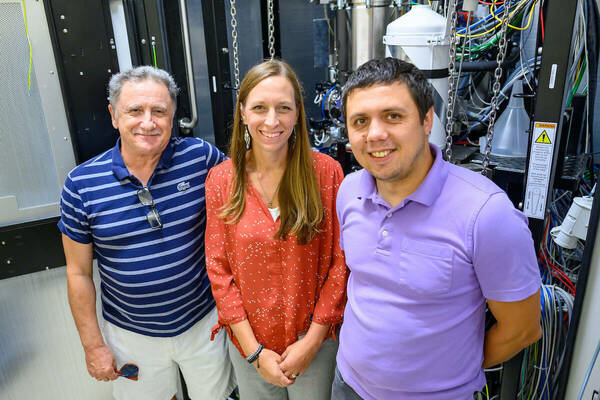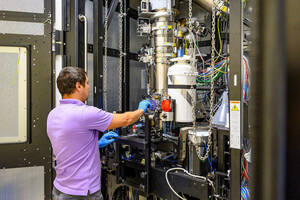
We are proud to announce that with the help of a generous donor, the Notre Dame Integrated Imaging Facility has added two powerful diagnostic tools to our new Transmission Electron Microscope “Spectra 30-300” (Thermo Fisher Scientific Inc., USA), which holds the world record in spatial resolution (0.45 A).
One of these diagnostic tools facilitates the acquisition of structural and elemental information in three dimensions, so-called, 3D-electron Tomography. The diagnostics include an analytical tomography holder optimized for energy-dispersive X-ray spectroscopy (EDS) and allows imaging specimens at extremely high-tilt angles with large fields of view. In addition, a set of software packages, which provide a user-friendly solution for the alignment of tomographic image series along with EDS maps, make possible the ability to produce a 3D reconstruction of the data and further visualization and analysis.
The second diagnostic tool is the latest generation GIF Continuum/K3 unit, direct electron detection platform for electron energy loss spectroscopy (EELS) and energy-filtered transmission electron microscopy (EFTEM) systems from Gatan (USA), including the fastest in the world K3 electron counting detector for the ultimate EELS and EFTEM data quality. This diagnostic tool allows atomic-level EELS mapping of the elements, in-situ spectrum imaging at elevated temperatures, sp-hybridization and valance mapping, and more.

“We are ecstatic to have these tools available on campus. They will help to cement Notre Dame as a major hub for multidisciplinary imaging research in Indiana and throughout our region”, said Bradley Smith, director of the Notre Dame Integrated Imaging Facility and Emil T. Hofman Professor of Science in the Department of Chemistry. “These additions to NDIIF will advance ongoing projects and amplify Notre Dame’s contributions in innovative scientific research, education, and outreach.”
Both diagnostics have arrived on campus, and the installation process will start on November 8th and should be finished by the end of November 2021. The Integrated Imaging Team will do their best to make the “Spectra” instrument with its newly installed diagnostics available to users this year!